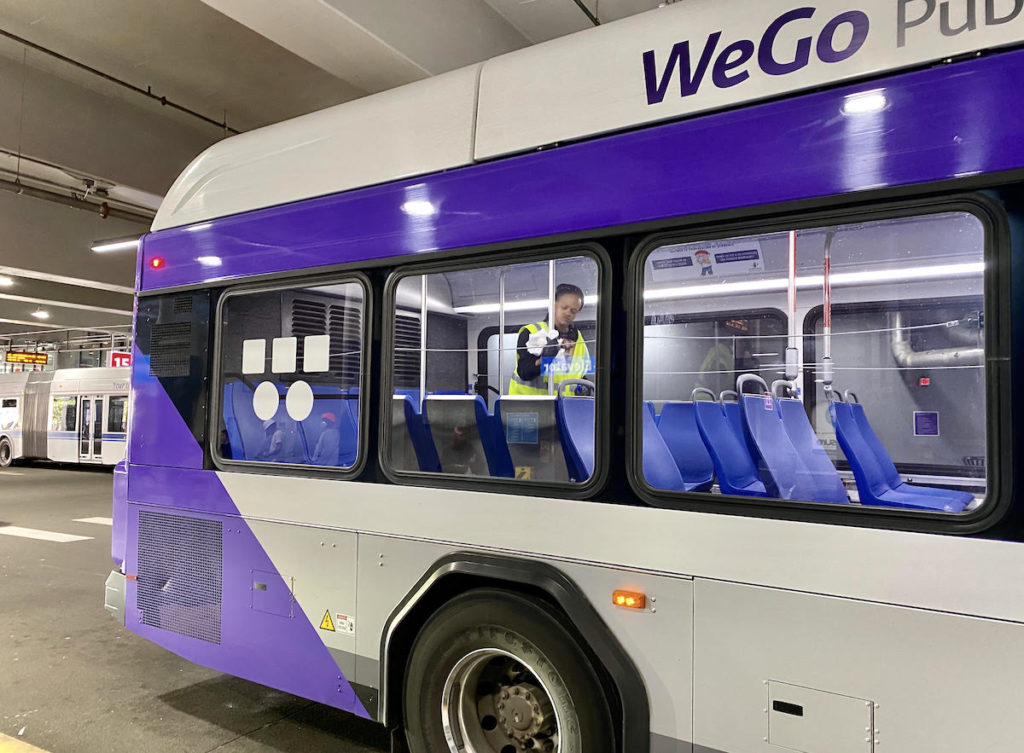
The COVID-19 pandemic has slashed Nashville’s bus ridership in half — down 53% decline compared to pre-COVID times.
Since August, bus ridership has become somewhat consistent, averaging 12,000-14,000 riders on weekdays. WeGo stats show they’re traveling to essential services, like the grocery store, government offices and to and from low-income housing.
“When I ride and talk to folks, people are really struggling out there. Even if they’ve kept their jobs, very often they’re on reduced working hours or reduced income,” says WeGo CEO Steve Bland. “It’s not a matter of, ‘Oh, can I ride the bus because it’s convenient’ … it’s literally the only connection they have to the places they need to get to.”
The reduced ridership could be a factor as WeGo opens discussions about its next budget. The agency says it is considering three scenarios.
The worst case — if Metro substantially reduces its local funding again — could lead to reduced services or another fare increase. At best, WeGo could end up with something of a surplus thanks to as-yet unspent federal CARES Act money. Those dollars could jumpstart some bus service improvements that the agency has had on its agenda for several years.
Two years of cuts
Buses are the centerpiece of Mayor John Cooper’s transportation plan, which makes a pitch to expand and increase the efficiency of the current system. He wants people to be able to ride the bus for the essentials and for leisure, which would be a shift in culture for a car-centric city.
But his ambitious plan comes after two years of service cuts to Nashville’s bus system.
“So the key for Nashville is we need to move from the plan stage to the implementation stage,” Bland says.
He’s optimistic about Cooper’s ideas. But the question is how much money is available.
For the past year, WeGo has relied on federal pandemic relief money after the city cut its contribution by $22.8 million.
Adapting on the fly
Before 2020, the city updated its bus schedule twice a year, which allowed them six months of preparation and time to analyze ridership patterns. But when the pandemic hit in March that structure went out of the window. They’ve had to change the schedule three times.
“We know that passengers may be inconvenienced. They may have to walk farther away or wait a little bit longer,” says Katie Freudberg, WeGo’s scheduling and service planning manager.
WeGo expects they’ll continue quickly adapting until commuters are back in their offices and students headed toward their classrooms.

